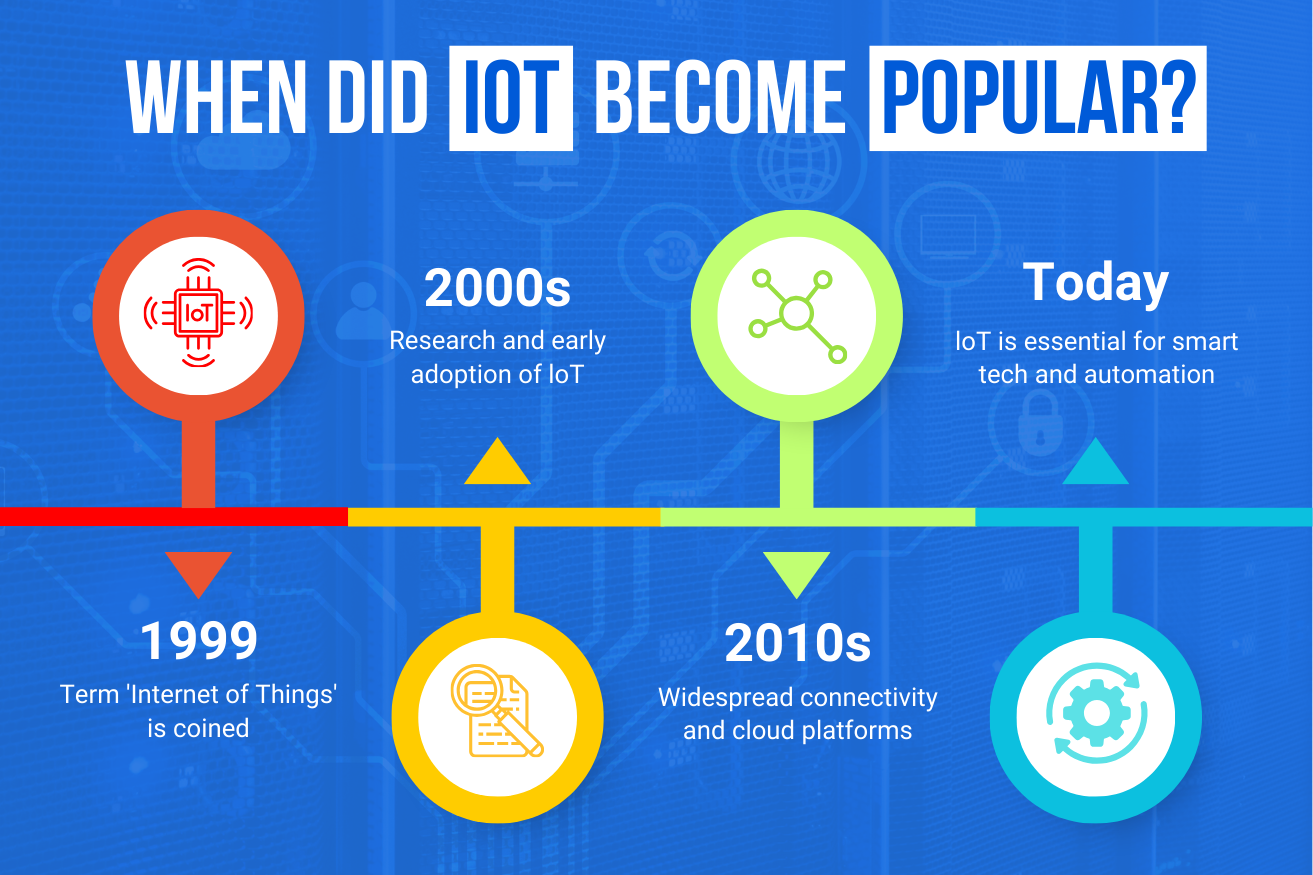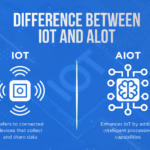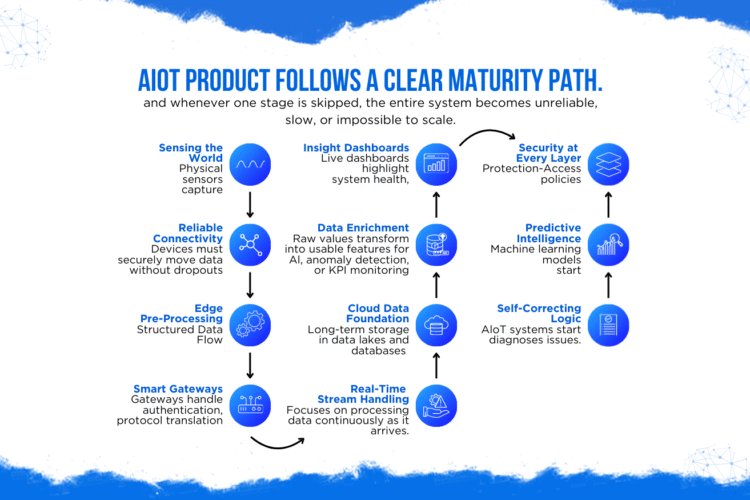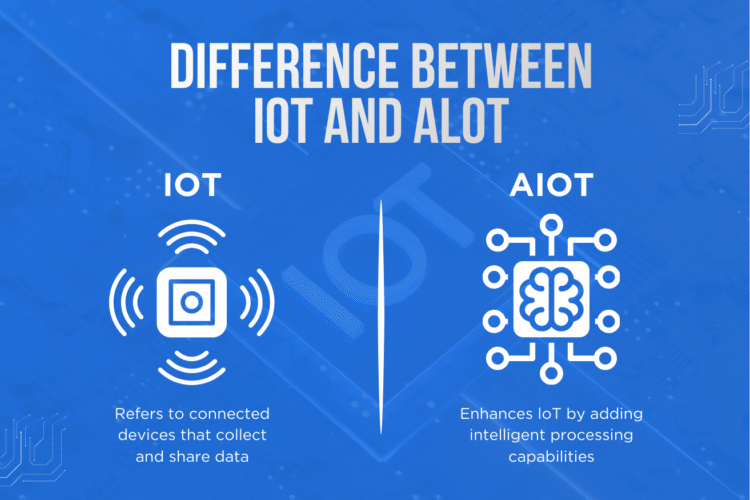
The Internet of Things (IoT) is no longer a futuristic concept—it’s already embedded in our homes, industries, and cities. But many ask: When did IoT actually become popular? To answer this, we need to look at its origins, the milestones that shaped it, and why it’s more important today than ever.
The Origins of IoT
The term “Internet of Things” was first coined in 1999 by Kevin Ashton, a British technology pioneer. At the time, Ashton envisioned a world where physical objects could communicate with each other and with humans through the internet. His vision was rooted in supply chain tracking, but it set the foundation for the IoT revolution.
Early Days: Before IoT Went Mainstream
In the early 2000s, IoT was more of a research topic than a market reality. Connected vending machines, RFID-enabled supply chain tracking, and industrial monitoring systems were early examples. However, IoT adoption was limited because of:
- High costs of sensors and hardware
- Limited wireless connectivity options
- Lack of scalable cloud infrastructure
The IoT Boom: 2010s and Beyond
IoT started becoming popular in the 2010s, when several technology shifts converged:
- Affordable sensors & microcontrollers like ESP32, STM32, and nRF52 enabled cost-effective prototypes.
- Widespread connectivity with 4G, Wi-Fi, BLE, and later LoRaWAN and 5G, allowed devices to talk to each other seamlessly.
- Cloud platforms such as AWS IoT Core, Microsoft Azure IoT Hub, and Google Cloud made data storage and analytics accessible.
- Smartphones gave consumers easy access to connected devices through mobile apps.
This decade saw the rise of smart home products, industrial IoT platforms, healthcare wearables, and city-wide smart infrastructure.
IoT Today: From Popular to Essential
Today, IoT is not just popular—it is foundational for digital transformation. Modern applications include:
- Smart healthcare devices that monitor vitals and predict emergencies.
- Industrial IoT (IIoT) systems that optimize energy, reduce downtime, and ensure predictive maintenance.
- Agriculture IoT for precision farming and crop monitoring.
- Smart cities with intelligent traffic systems, energy management, and public safety monitoring.
According to industry reports, over 15 billion IoT devices are active worldwide in 2025, and this number continues to grow.
Why IoT Matters for the Future
IoT is shaping the future of automation, AI integration, and human-machine collaboration. With the rise of edge AI, IoT devices can now make intelligent decisions without relying solely on cloud servers—offering faster responses and improved privacy.
MetaDesk Global and IoT Innovation
At MetaDesk Global, we’ve been part of this IoT journey—designing solutions from concept to market-ready products. Our projects include:
- BLE tags and asset trackers with ultra-low power consumption (2+ years battery life).
- AI-enabled computer vision systems for automation and security.
- Wearable healthcare devices for real-time monitoring.
- Industrial monitoring platforms for energy and environmental optimization.
We specialize in end-to-end IoT development—firmware, PCB design, enclosures, mobile apps, and cloud integration.
Conclusion
So, when did IoT become popular? The short answer: the 2010s—when technology, cost, and connectivity aligned. The long answer: IoT continues to evolve, and its popularity is only growing as we move into an AI-powered, hyper-connected world.
At MetaDesk Global, we’re committed to pushing these boundaries further, building IoT products that are smarter, more efficient, and built for scale.




